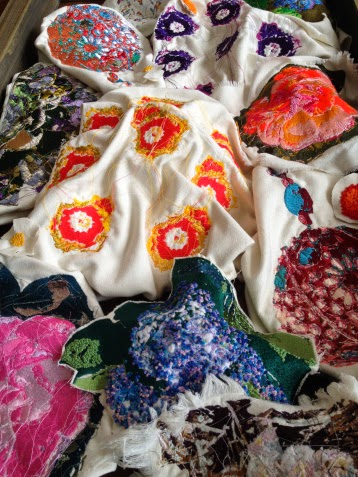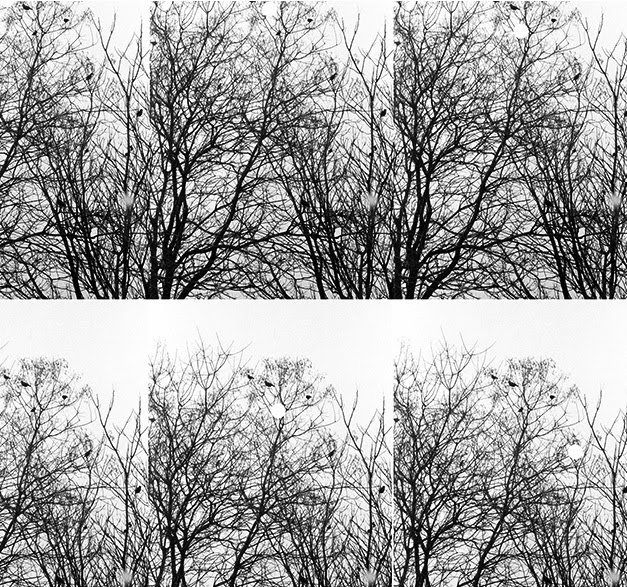ART REVIEW: "C. Pazia Mannella & Tamsen Wojtanowski: Inside Voices"-Napoleon Gallery
(Author's note: I wrote this piece for Title Magazine. You can find it on Title here!)
Inside Voices, at first glance, might seem to be made up of rather disparate media: black and white photography by Tamsen Wojtanowski and textiles by C. Pazia Mannella. Yet the closer I looked, the more I was able to see visual cues and connections between such different types of works. Stringing those cues together, I was able to see Inside Voices as a meditation on memory. While Wojtanowsi’s photographs create the visual representation of memory, Mannella’s textiles play with the tactile feeling of memory, indicating her more hands-on approach to remembrance and nostalgia.
Inside Voices, at first glance, might seem to be made up of rather disparate media: black and white photography by Tamsen Wojtanowski and textiles by C. Pazia Mannella. Yet the closer I looked, the more I was able to see visual cues and connections between such different types of works. Stringing those cues together, I was able to see Inside Voices as a meditation on memory. While Wojtanowsi’s photographs create the visual representation of memory, Mannella’s textiles play with the tactile feeling of memory, indicating her more hands-on approach to remembrance and nostalgia.

Mannella, Force, detail.
The highlight and centerpiece is Golden, a hanging yellow mass of crocheted ribbon by Mannella. While this work may seem at first glance to be harder to relate to the other pieces in this room of nostalgia and half-remembered images, upon looking at the other works through Golden’s web, it became clear that this work is the lens through which we are meant to look at the other pieces. When I looked through the netting it rendered the works blurry and hazy, as if I were picturing an image in the back of my mind and struggling to bring it to the forefront and into focus. Golden is the vehicle of remembrance in this show.

Mannella, Golden.
Force, also by Mannella, a floor installation consisting of embroidered fabric held inside a rectangular wooden frame, was notable due to its placement. At first, it made me think of a sandbox—that ultimate bastion of childhood memory. The way it is framed seems so familiar, yet it is boxed in—like the confines of memory, the limits of our ability to call forth things we are trying to remember.
When we struggle to remember things, we might close our eyes in concentration while points of light flicker and glow beneath our closed lids. I/You/We, a collection of gelatin prints by Wojtanowski, appears to be an illustration and extension of this phenomenon, conjuring up the light round dots swimming in the black space of the inside of our eyelids. Taken together with Golden, it is an image evocative of reminiscence.

Wojtanowski, I/You/We, detail.
The other works by Wojtanowski hearken back to ideas of
memory much more explicitly. Home and home, two black-and-white stills, imbue
the images of places and events with a tender, nostalgic quality. home, a digital archive print, presents
the side of a clapboard house with a smattering of swaying flowers, while Home, a silver gelatin print, depicts Wojtanowsi’s
partner and their dog caught in two antiparallel lines of movement. The similar
titles reference both kinds of ways that Wojtanowski finds herself at home,
both in the literal sense in home,
and in the metaphorical, emotional sense with those close to her in Home.

Wojtanowski, Home.
The final connection between these two sets of works by Wojtanowski and Mannella is the repeated use of plant and floral motifs. Trace, a watercolor and embroidery on silk by Mannella, appears to be both a faintly-rendered pair of arms and a back from behind. Yet the texture is reminiscent of a tree trunk, which is echoed by the pattern and texture of the yellow fabric in Golden, and is carried on to finality by the repeated black-and-white tree imagery of Untitled (birds) by Wojtanowski. These works can be taken in one sweep across the gallery and it is visually satisfying to make that connection. Additionally, Untitled (birds)’s repetition of the same photograph of trees functions as a visual representation of trying to remember something—even as you try to go further back in your mind, you are met with the same repeated image, repeated memory, as you try to trace your steps back.

Wojtanowski, Untitled Birds, mock-up.
Every new angle in Inside Voices reveals a series of visual and thematic connections. It is as if Wojtanowski and Mannella are in dialogue: the former arguing for the importance of visual memory, while the latter presents tactile memory as equally important. The two artists are conversing in a language of memory that they share, using their “inside voices.”
Comments
Post a Comment